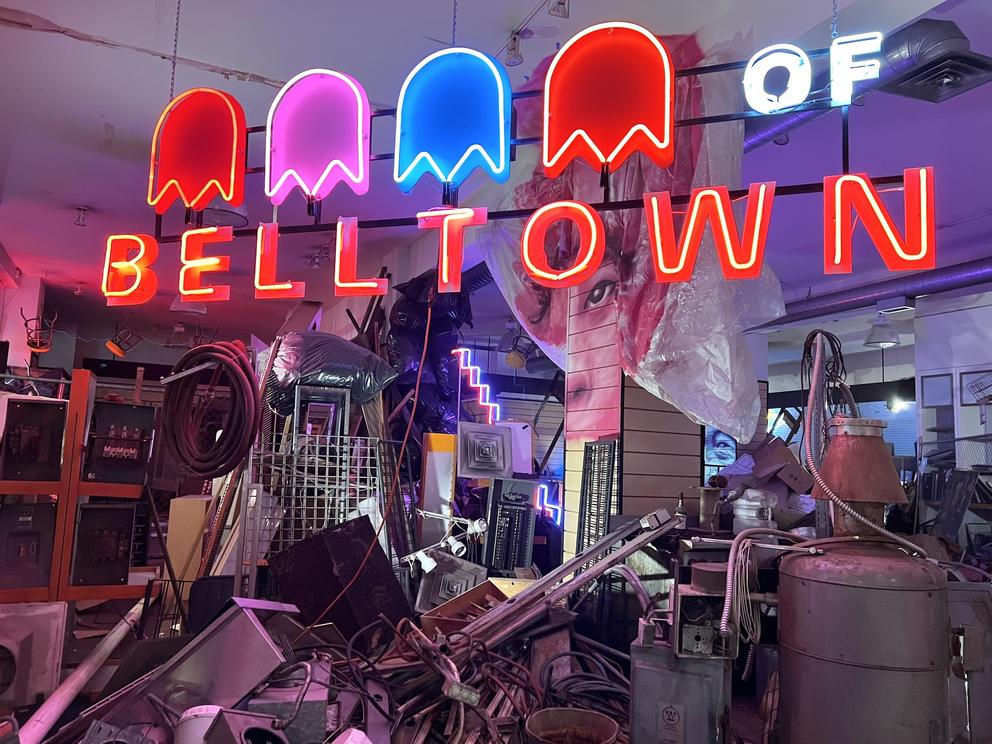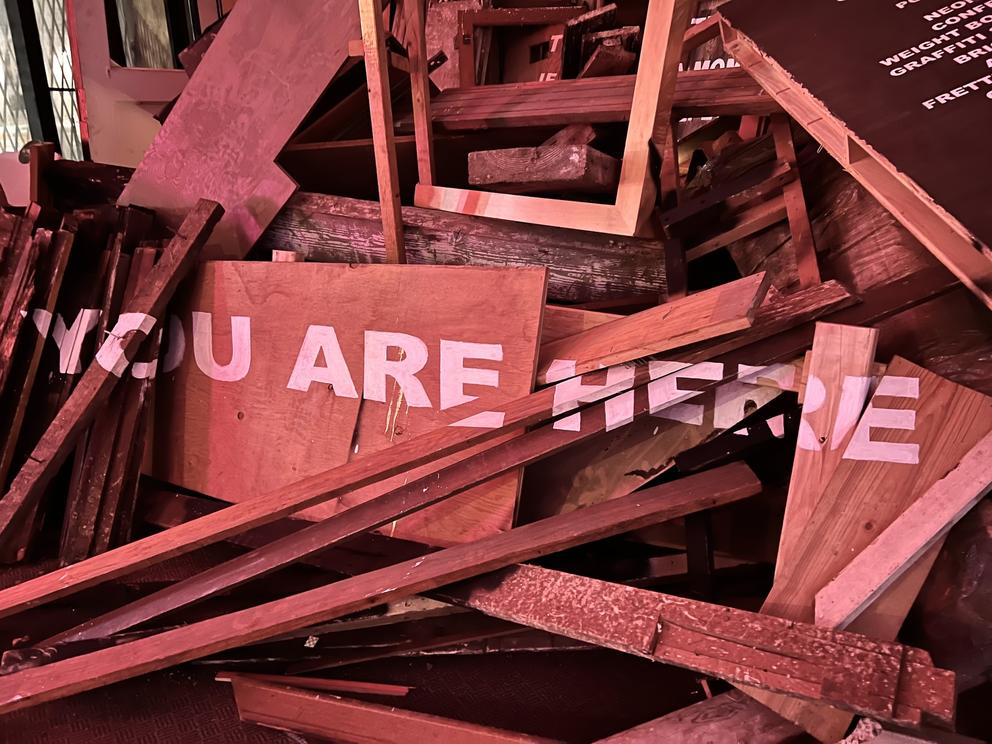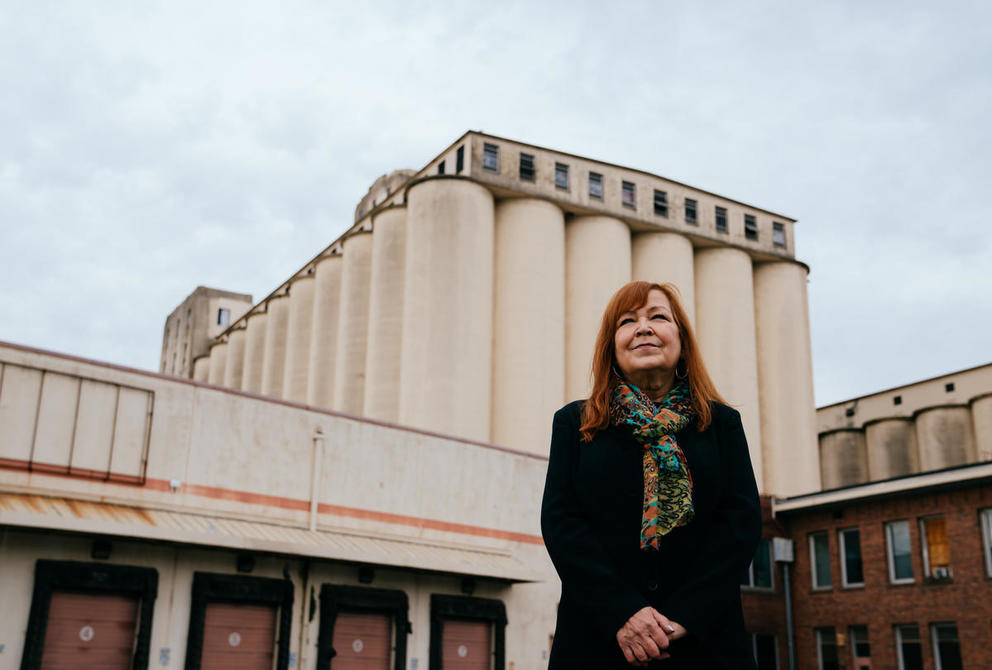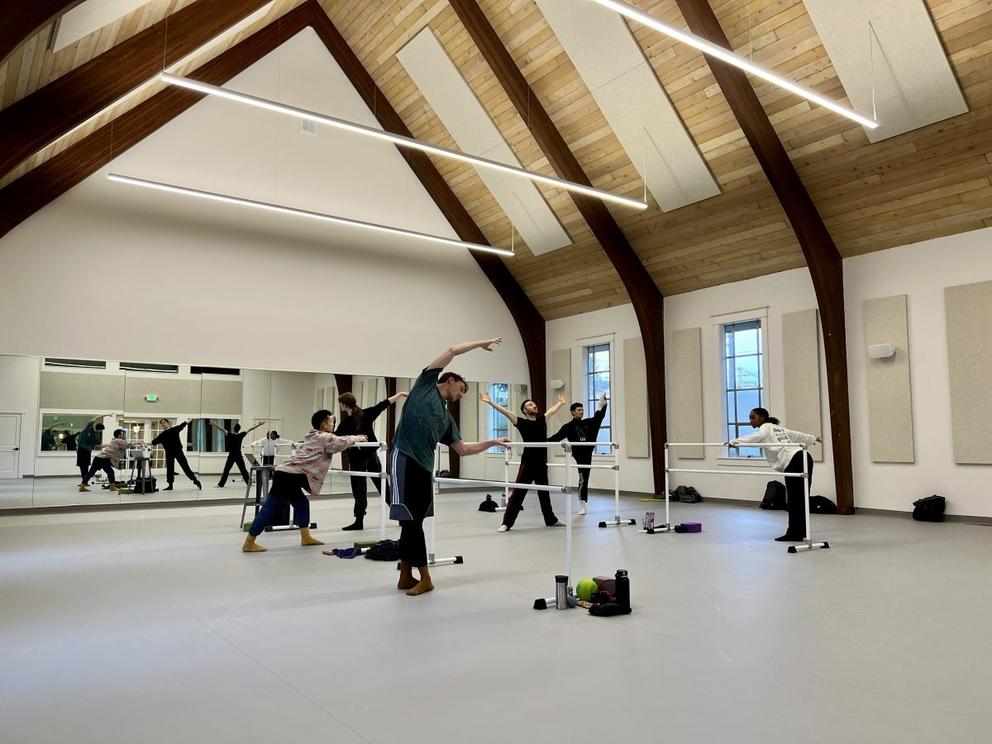When I pulled up, I was intrigued yet doubtful. How could such a plain structure house an instrument as elaborate as a pipe organ? Once inside, I found a charming community hall with a small stage and concession stand and, yes, a functioning 1929 theater organ that at some point had been grafted onto the old bones of the building. (Turns out the pipe organ made quite the journey from Iowa.)
I learned that Kenyon Hall has a steady lineup of cultural events, from country duos to drag cabaret. So when I got home I looked into how long it’s been open as a performance space. 108 years! How did I miss it?
It’s rare for a Seattle venue to stay put for so long. Alongside the city’s constant expansion, arts venues tend to be in flux, always coming and going. Many take a hermit crab approach, making homes in old buildings that lost their original purpose amid the changing times.
Take Teatro Zinzanni, the currently nomadic cirque group that has taken up temporary residence (through March 31) in the Sanctuary Ballroom at the Lotte Hotel downtown. Instead of a big top, the actors and acrobats perform under the stunning Byzantine-style dome of the former First United Methodist Church, constructed between 1907 and 1910 and believed to be the nation’s oldest beaux arts building. (You’ll find a pretty pipe organ here too, though it’s not functional.)
But it needn’t be anything so grand — sometimes all you need is an old luggage store. Artists have recently taken over the long-vacant Bergman’s Luggage store downtown (at Third Avenue and Stewart Street) with an exhibit called Ghosts of Belltown (open evenings Jan. 19, 20, 26).
Led by artist Nick Ferderder and Base Camp Studios, the show features all the detritus left in the old store — toilets, display racks, long wooden boards — formed into haunting and clever installations by local artists Amanda Manitach, Brady Black and Yale Wolf.
Base Camp intends the first floor (minus the trash) to become a regular space for installations. Upstairs, Ferderer is hard at work turning the decrepit but impressively windowed space into artist’s work studios. (When I visited, he referred to one corner as “the coop,” so named for a number of dead pigeons he found there.)
The mission was summarized by a sign Ferderer posted in the window: “Vacant too long, creative community space coming soon.”
Another recent venue visit took me to Harbor Island for a soundstage tour of the new Harbor Island Studios. I’d been meaning to check out the flour mill-turned-film studio since it was unveiled back in 2022, so on a chilly late-December day I signed up for a walk-through.
The 117,000-square-foot facility — intended to lure film and television productions to Seattle — is impressive both in scale and location. The mill and grain silos were built in the early 1900s; King County purchased the property two decades ago but it was left vacant for years. Now the giant empty warehouses stand ready to be transformed into sets.
Tour leader Kate Becker, creative economy and recovery director for King County Executive Dow Constantine, ensured our group that the many sounds of the industrial waterway (including squawking seagulls) would be completely muffled once the “double-elephant” doors were closed.
She then opened a port in the floor and showed us rippling water below, explaining that two-thirds of the structure is built on a dock over the Duwamish river. It was a surprising glimpse that pointed toward the creative repurposing happening all over Seattle.
Another example, coming soon to Georgetown: Mini Mart Citi Park, the two-year-old gas station-turned-arts and community space, will soon be expanding into a house next door. Thanks to a generous donor, the group (led by Seattle artist collective SuttonBeresCuller) was able to buy a vacant house that shares a property line with the current space.
Ben Beres told me there’s a lot of work to be done, but the plan is to turn the house into an artist’s residency upstairs, and use the lower floor for creative classes — the latter as early as this summer. Speaking about the vital role artist residencies played in his own career, Beres says, “We’re really excited to share that experience with artists from all over.”
In more arts space news, Whim W’Him recently announced that its new dance center is up and running. In late 2022, the contemporary dance company finalized the purchase of a church at the top of Queen Anne Hill. The building has been transformed into an airy space for classes, rehearsals and rentals — or, as the company puts it, “a hub for creative expression in Seattle.”
Performances won’t happen in this space, but you can experience Whim W’him’s new Winter ’24 show at Cornish Playhouse (Jan. 19-27), featuring a trio of works by choreographers Olivier Wevers, Brett Easterling and Joseph Hernandez.
I’ll end with some distressing arts space news…
Two weeks ago, during the first First Thursday art walk of 2024, I snapped a photo of a sign posted in the window at Davidson Galleries in Pioneer Square. “EXCITING NEWS!” the announcement began, in all caps. “Davidson Galleries is moving within Pioneer Square.”
It was indeed exciting news, as the gallery’s status had been in question after founder/owner Sam Davidson announced his retirement this past spring — having run the print-focused space for 50 years. The sign said the gallery would soon be moving four blocks away, to a storefront at 85 Yesler Way, in the historic Pioneer Square Hotel Building.
But just one week later (Jan. 12), a fire tore through the gallery, damaging many of the collected works on paper, from antique to contemporary. (It was early morning; thankfully no people were inside.) While the total damage has yet to be assessed, the good news is that Davidson still plans to reopen in the new space.
Stay tuned for updates on this and other Seattle arts spaces, old and new.
Get the latest in local arts and culture
This weekly newsletter brings arts news and cultural events straight to your inbox.






